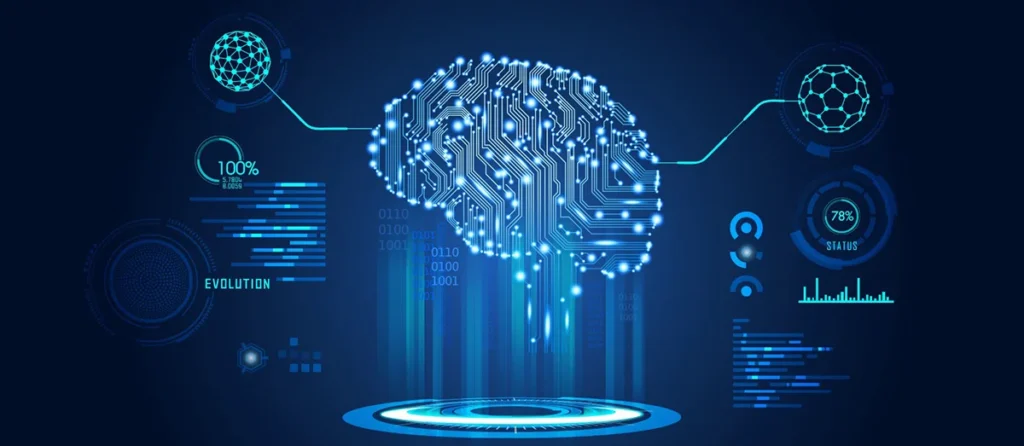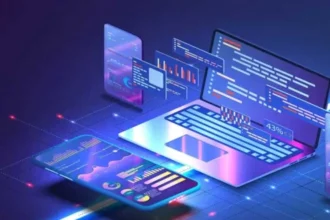We live in a time of acceleration when every minute counts. Businesses have to automate as much as possible. And that’s where hyperautomation comes in. It’s not just a fad; it’s a revolution of thinking on automation.
Due to this, businesses boost productivity, save time, and lower costs. It’s especially life-altering for companies using software development services for automation. The moment organizations embrace hyperautomation, they start unleashing hidden potential. So, let’s explore the mechanism and what the future of this powerful movement will be.
What Is Hyperautomation?
Hyperautomation represents the next wave after traditional RPA (Robotic Process Automation). It combines AI, ML, and advanced tools. With an expected market size of $270.63 billion by 2034, it helps businesses automate complex tasks, not just routine ones. That means hyperautomation comes with smarter decisions and more efficient processes.
This new technology also brings humans and machines together for even more significant results. It’s not about replacing workers—it’s about empowering them. Businesses, along with the help of software development consulting services, are now focusing on using hyperautomation to boost productivity.
It consolidates systems, software, and data into one innovative workflow. In short, hyperautomation further smartly automates the automation process, making it more intelligent, agile, and scalable. It is, in fact, delivering automation at its finest.
How Is Hyperautomation Different from Traditional RPA?
Till now, the traditional RPA system has helped businesses with automation. However, hyperautomation pushes the scope of automation even further, demanding us to understand their differences to scrape out the future possibilities of hyperautomation.
● Complexity
Traditional RPA processes are simple, rule-based procedures. Hyperautomation processes complex procedures across many systems. It makes decisions based on AI and information. This allows it to adjust in real-time. Though the existing RPA can do good, hyperautomation adds further depth and quickness. It also will enable businesses to handle change more effectively and grow smarter.
● Scope
RPA attacks one task at a time, like data entry. Hyperautomation addresses end-to-end processes at the team level. It interlinks various systems and tools with one intelligent system. But, it doesn’t just automate but redesigns how they are done. Companies utilizing software development services prefer creating these systems for specific needs. This broad scope improves efficiency as well as speed.
● Intelligence
RPA doesn’t have learning embedded in it. Hyperautomation uses AI and ML to learn from data. It learns better results with time. It learns patterns and predicts issues before they happen. This makes automation intelligent. More and more businesses are accepting AI in their existing RPA to induce adaptive learning facilities. As a result, they are getting an efficient, self-learned tool for intelligent automation.
● Technology Used
RPA uses bots and scripts. Hyperautomation uses a full toolset—AI, ML, process mining, etc. All the tools together give in-depth insights. Firms prefer to use software processing services for designing tailor-made platforms that have everything built into them. Therefore, the technology used in hyperautomation gives them a future-proof solution that transforms as their needs transform.
● Continuous Improvement
RPA does not move around without being manually updated. Hyperautomation improves by itself based on feedback loops. It sees what works and what does not. It adjusts by itself, leading to better long-term outcomes. With support from software development firms, businesses develop systems that get better. They do not just automate but also innovate as they scale.
The Expected Role of Hyperautomation in the Future
The future wants businesses to act at a lightning-fast speed and with accuracy. Catering to this demand, hyperautomation will become the heart of future companies by playing the following parts;
● Smarter Workflows Everywhere
Hyperautomation will revolutionize the way teams function. From HR to marketing, all departments will benefit. Instead of repeating tasks, systems will think and adapt, leading to faster results with fewer errors. Companies using software development services will build smarter tools that work 24/7, and employees will focus more on value-added work.
As soon as hyperautomation takes over routine tasks, creativity increases. Companies are able to introduce new projects quickly. With fewer roadblocks, they also adapt more easily to customer demands. This shift will revolutionize the way we approach work itself. More work will be thinking, not typing. That’s how we build a smarter, faster world.
● Custom Software Arrives at Hyperautomation
Off-the-shelf solutions won’t fit every need. That’s why more companies hire a software development service to develop customized software for hyperautomation. These tools plug into AI systems, bots, and data. It all feeds into each other. With the help of software development consulting services, teams create platforms that are exclusively for them. It leads to better results and faster delivery.
Imagine a system that automatically updates inventory, handles suppliers, and interacts with customers—without human touch. That’s the power of bespoke automation. Hyperautomation offers flexibility, but bespoke software provides precision. Together, they form a partnership that is winning. The trend will grow rapidly, especially after businesses seek to establish a competitive edge.
● Scaling with Less Stress
With hyperautomation, businesses no longer need enormous teams to scale. They, rather, now prefer to use smart systems. These systems copy, alter, and improve processes without involving people. With the right RPA development services, this setup is simple to deploy. It’s easy to scale as well as support.
Additionally, when more demand comes along, the system adapts to it. That means there are fewer delays and less agonizing in the hiring process. Companies can remain lean but execute fast. Even training time lessens with automation tools. Additionally, it allows for quicker onboarding. Therefore, hyperautomation helps companies grow with less stress.
● Better Decision-Making
Hyperautomation does not just act—it also gives insight. It observes the way things function and provides feedback in real time. When something becomes slower, it identifies the cause. It then suggests remedies. Some systems even apply solutions independently. Therefore, with the help of software development consulting services, these results become part of daily routines.
Managers then make wise decisions on the basis of facts. This also reduces guesswork. The team understands what works and what must change. Over time, the system improves accuracy. Businesses that use RPA development services can integrate dashboards that track performance. The result? Every day, smarter, faster decisions.
● Resilience in Changing Times
The market is changing constantly. Hyperautomation allows companies to respond quickly according to these changes. AI tools discover trends and suggest new methods. When one system breaks down, another takes over. This builds business resilience. Therefore, through software development firms, companies can develop automation that fits their specific needs.
These systems grow and adapt with the firm. They also weather disruptions more effectively than human teams. Hyperautomation systems learn from past errors. Therefore, with its adaptation, companies can expect fewer mistakes in the future. Companies that employ these tools will become more resilient. They will effectively bounce back from failures. That will make them stronger in the long run.
Conclusion
Hyperautomation is not a technological improvement; it’s the smart approach to working. It injects speed, learning, and responsiveness into business operations. When organizations adopt quality software development services, they receive resilient software products created for their specifications. When they marry RPA with hyperautomation, they create lasting value. Whereas traditional automation advanced as far as it could, hyperautomation shifts the line even further. It is actually the next phase of digital transformation. The time has come to embrace it.

















